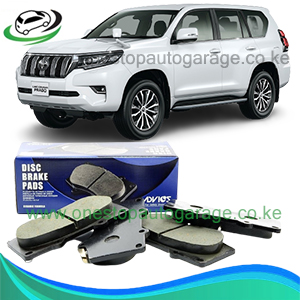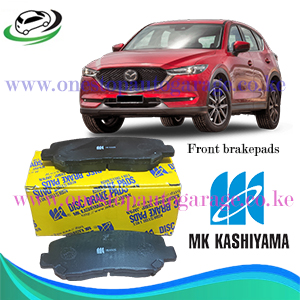-9%
Get Mazda CX5 Front Ceramic Brake Pad KASHIYAMA MK
Ceramic brake pads are a type of brake pad used in automotive braking systems, specifically designed to offer certain advantages over traditional organic or semi-metallic brake pads. Here’s a definition and overview of ceramic brake pads:
Definition:
Ceramic brake pads are composed primarily of ceramic fibers, filler materials, bonding agents, and sometimes small amounts of metal fibers. They are engineered to provide reliable braking performance while offering benefits such as reduced noise, lower dust generation, and potentially longer pad life compared to other types of brake pads.
Function and Composition:
- Braking Performance:
- Friction Material: Ceramic brake pads are made from a dense ceramic material mixed with copper fibers or other filler materials.
- Heat Dissipation: They are designed to handle high temperatures generated during braking without fading, providing consistent performance.
- Noise Reduction:
- Quieter Operation: Ceramic pads typically produce less noise and squeal compared to semi-metallic pads, enhancing driving comfort.
- Dust Reduction:
- Low Dust: They generate less brake dust compared to semi-metallic pads, keeping wheels cleaner and reducing maintenance.
- Durability and Wear Characteristics:
- Longevity: Ceramic pads often wear more slowly than semi-metallic pads, resulting in longer service life.
- Rotor Friendliness: They are gentle on brake rotors, causing less rotor wear and reducing the likelihood of rotor grooving.
- Performance in Varied Conditions:
- Consistent Performance: Ceramic pads maintain consistent braking performance across a wide range of temperatures, making them suitable for everyday driving and occasional high-performance use.
- Cold Weather Performance: They perform well in cold weather conditions, offering reliable braking without requiring warm-up time.
Benefits of Ceramic Brake Pads:
1. Superior Braking Performance:
- Consistent Performance: Ceramic brake pads provide smooth and consistent braking performance across a wide range of temperatures. This reliability enhances driver confidence and safety, particularly during emergency braking situations.
- Shorter Stopping Distances: They often deliver shorter stopping distances compared to organic brake pads, which is crucial for improving overall vehicle control and safety.
2. Noise Reduction:
- Quieter Operation: Ceramic brake pads are known for producing significantly less noise and squealing during braking compared to semi-metallic or organic brake pads. This makes them ideal for vehicles where noise reduction is a priority, such as luxury cars or daily commuters.
3. Reduced Brake Dust:
- Minimal Dust Generation: Ceramic brake pads generate considerably less brake dust than traditional semi-metallic brake pads. This results in cleaner wheels and less frequent cleaning maintenance, improving the aesthetic appearance of the vehicle.
4. Longevity and Durability:
- Extended Service Life: Ceramic brake pads typically last longer than organic brake pads due to their robust construction and resistance to wear.
- Less Wear on Rotors: They are gentler on brake rotors, causing less rotor wear and contributing to longer rotor life compared to semi-metallic pads.
5. Heat Resistance:
- High Temperature Tolerance: Ceramic brake pads have excellent heat resistance properties, which helps prevent brake fade (reduced braking power due to overheating) during intense or repeated braking, such as during mountain driving or towing.
6. Smooth and Comfortable Braking:
- Smooth Engagement: Ceramic pads offer smooth and progressive braking engagement, providing a comfortable driving experience with minimal pedal effort.
7. Environmental Considerations:
- Low Toxicity: Ceramic brake pads typically contain materials that are less harmful to the environment compared to some semi-metallic brake pads. They produce less airborne particulate matter and contribute to cleaner air quality.
8. Compatibility:
- Versatility: Ceramic brake pads are compatible with a wide range of vehicles and driving conditions, from everyday commuting to occasional high-performance driving. They can be used with both standard brake rotors and some performance-oriented rotors.
Considerations:
-
- Cost: Ceramic brake pads often have a higher initial cost compared to organic brake pads. However, their extended service life and reduced maintenance requirements can offset this initial expense over time.
- Application: While suitable for most driving conditions, ceramic brake pads may not be optimized for extreme performance scenarios where specific braking characteristics are required.
Considerations:
- Cost: Ceramic brake pads may be more expensive than traditional semi-metallic pads, but they offer longer-term benefits and reduced maintenance.
- Vehicle Compatibility: Ensure compatibility with your vehicle’s braking system and consult manufacturer recommendations.
Follow us on Facebook for more parts.



